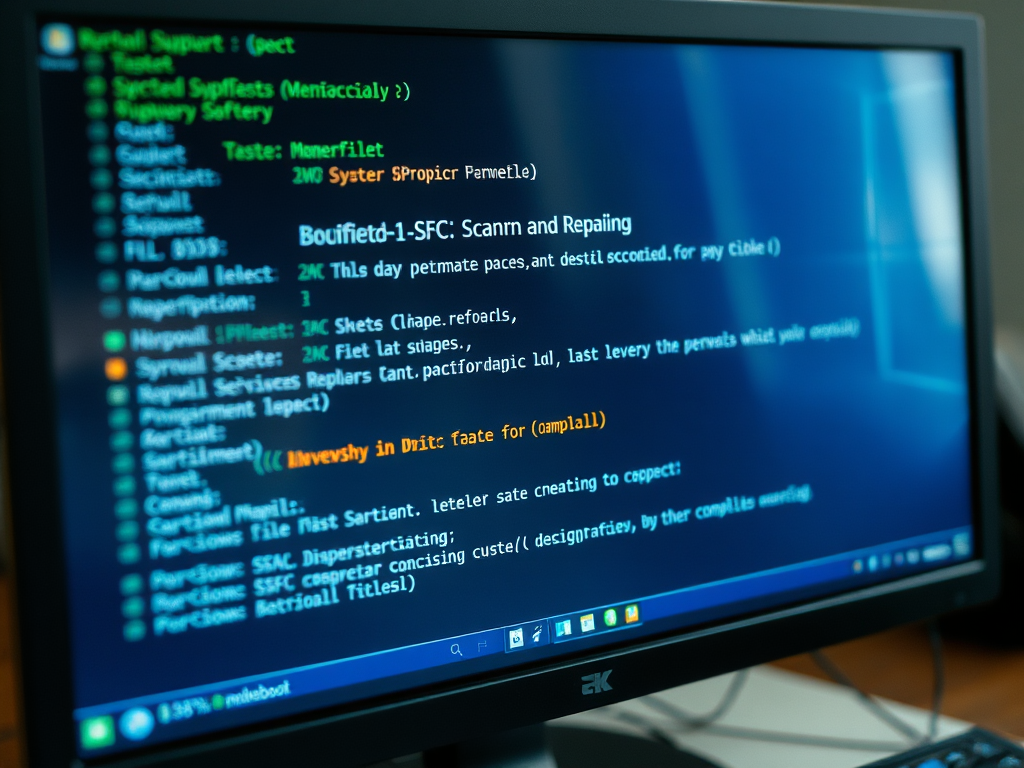System File Checker (SFC) is a built-in utility in Windows that scans and repairs corrupted or missing system files. Running SFC can help resolve various issues like crashes, error messages, or system instability. Here’s how to use it:
Common Issues Where SFC Can Help:
Frequent System Crashes or Blue Screen of Death (BSOD):
- If your computer crashes frequently or shows a blue screen, there may be corrupted system files causing these errors. Running SFC can help repair these files and restore system stability.
Missing or Corrupted DLL Files:
- Applications or Windows features may fail to launch due to missing or corrupted Dynamic Link Library (DLL) files. SFC can detect and restore these critical files.
Unusual System Behavior:
- If you notice unexplained slowdowns, freezes, or other unusual behaviors, it’s possible that system files have been altered or corrupted. SFC can help resolve these issues.
Failed Windows Updates:
- Sometimes, Windows updates might fail to install properly due to corrupted system files. Running SFC can repair these files, allowing the update to proceed smoothly.
Unresponsive Windows Features:
- If certain Windows features (like the Start Menu, File Explorer, or Settings) are unresponsive or not working correctly, corrupted system files might be the cause. SFC can restore these features to working order.
How to Run SFC:
Ensure Your System is Up to Date:
Before running SFC, it’s recommended to install the latest updates for Windows. This ensures that any known issues are resolved before you start troubleshooting. After updating, restart your computer.
Open Command Prompt as Administrator:
- In the search box on the taskbar, type Command Prompt.
- Right-click or press and hold Command Prompt (Desktop app) from the list of results.
- Select Run as administrator and click Yes when prompted.
Run DISM to Prepare the System:
- In the Command Prompt window, type the following command and press Enter:
DISM.exe /Online /Cleanup-image /Restorehealth
This step might take a few minutes to complete, depending on the condition of your system. This command ensures that the Windows image is healthy before proceeding with the SFC scan.
Run the System File Checker (SFC):
- After DISM completes, type the following command and press Enter
sfc /scannow
The SFC utility will scan and automatically repair any corrupted or missing system files. This process may take some time, so be patient.
Review the Results:
- Once the scan reaches 100%, you will receive a message with the results:
- “Windows Resource Protection did not find any integrity violations” means no issues were found.
- “Windows Resource Protection found corrupt files and successfully repaired them” indicates that issues were found and fixed.
- If you receive any other message, you may need to take further steps to repair your system manually.
Close Command Prompt:
- After the process is complete, type
exitand press Enter to close the Command Prompt.
Discover more from My Tricky Notes
Subscribe to get the latest posts sent to your email.
